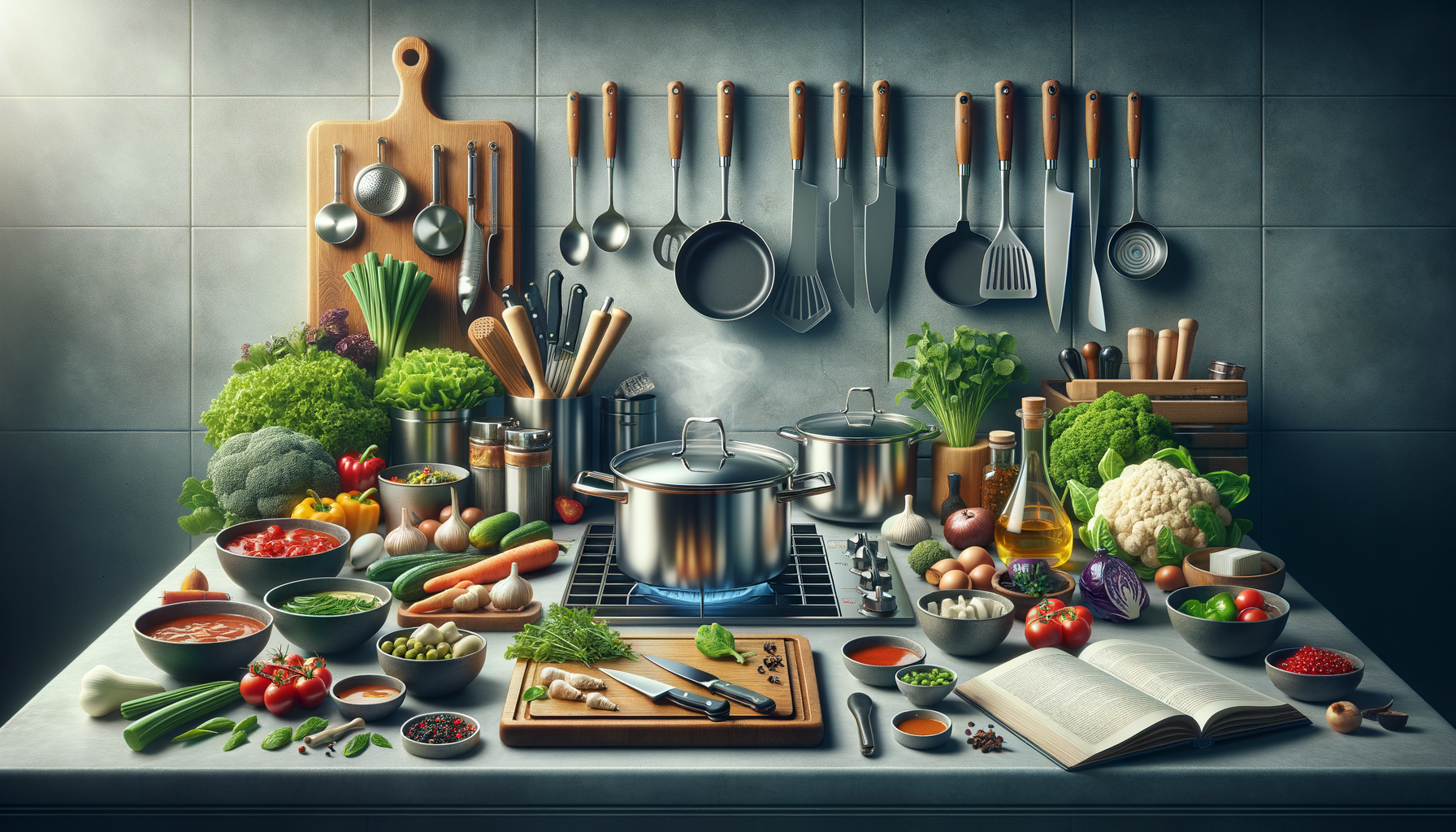
Why Culinary Students Master These 5 Habits First
Introduction: The Cornerstone of Culinary Expertise
In the world of culinary arts, mastering fundamental habits is crucial for success. These practices are simple, repeatable, and help create a strong kitchen foundation. Whether you’re a budding chef or a home cook looking to refine your skills, understanding these habits can significantly enhance your cooking experience. Let’s explore why culinary students prioritize these habits and how they can be applied in any kitchen.
Mise en Place: The Art of Preparation
Mise en place, a French term meaning „everything in its place,“ is more than just a habit—it’s a philosophy. This practice involves organizing and arranging ingredients before cooking, ensuring that everything needed is within arm’s reach. Culinary students are taught to embrace this practice from day one, as it not only streamlines the cooking process but also minimizes stress and errors.
Imagine preparing a complex dish without mise en place. The likelihood of forgetting an ingredient or misjudging cooking times increases significantly. By having everything ready, cooks can focus on the actual cooking, allowing for a smoother workflow and better results.
To implement mise en place effectively, consider the following steps:
- Read through the entire recipe before starting.
- Gather all necessary ingredients and tools.
- Measure and prepare ingredients as needed.
- Organize ingredients in the order they will be used.
This habit not only enhances efficiency but also improves the overall cooking experience, making it a fundamental practice for culinary students and home cooks alike.
Knife Skills: Precision and Safety
Knife skills are a cornerstone of culinary training, emphasizing both precision and safety. Mastery of knife techniques allows cooks to work efficiently and produce uniformly cut ingredients, which is crucial for even cooking and presentation.
Culinary students spend significant time honing their knife skills, learning various cuts such as julienne, brunoise, and chiffonade. These skills not only improve the visual appeal of dishes but also ensure consistent cooking times, as uniformly cut ingredients cook more evenly.
Beyond aesthetics, proper knife skills are essential for safety. A sharp knife is safer than a dull one, as it requires less force and reduces the risk of slipping. Students are taught to maintain their knives regularly, ensuring they remain sharp and effective tools in the kitchen.
For those looking to improve their knife skills, consider practicing the following techniques:
- Hold the knife correctly, with a firm grip on the handle and fingers tucked away from the blade.
- Use a rocking motion for slicing, keeping the tip of the knife on the cutting board.
- Practice different cuts to gain confidence and precision.
By mastering knife skills, cooks can enhance their efficiency, safety, and the quality of their culinary creations.
Tasting and Seasoning: The Balance of Flavors
Tasting and seasoning are critical components of cooking that can elevate a dish from good to outstanding. Culinary students learn the importance of tasting throughout the cooking process, ensuring that flavors are balanced and harmonious.
Seasoning is not just about adding salt and pepper; it’s about understanding how different flavors interact and complement each other. Students are taught to taste their dishes at various stages, making adjustments as needed to achieve the desired taste profile.
Developing a keen palate is essential for successful seasoning. This involves recognizing the five basic tastes—sweet, salty, sour, bitter, and umami—and understanding how they can be balanced to enhance a dish.
For home cooks, improving tasting and seasoning skills can be achieved through practice and experimentation:
- Taste dishes frequently during cooking and adjust seasoning as needed.
- Experiment with different herbs and spices to discover new flavor combinations.
- Understand the role of acidity and sweetness in balancing flavors.
By mastering the art of tasting and seasoning, cooks can create dishes that are not only flavorful but also well-balanced and satisfying.
Cleaning as You Go: Maintaining Order and Efficiency
The habit of cleaning as you go is instilled in culinary students to maintain order and efficiency in the kitchen. A cluttered workspace can lead to chaos, making it difficult to focus and increasing the risk of accidents.
By cleaning up spills, washing utensils, and organizing the workspace during cooking, students learn to keep their environment tidy and functional. This practice not only enhances productivity but also reduces the workload after cooking, making the entire process more enjoyable.
For those looking to adopt this habit, consider the following tips:
- Have a designated area for dirty dishes and utensils.
- Clean up spills immediately to prevent accidents.
- Organize ingredients and tools after use to maintain a clutter-free workspace.
Cleaning as you go is a simple yet effective habit that can transform the cooking experience, making it more efficient and enjoyable for both culinary students and home cooks.
Conclusion: Building a Strong Culinary Foundation
These foundational habits—mise en place, knife skills, tasting and seasoning, and cleaning as you go—are essential for anyone looking to excel in the kitchen. By mastering these practices, culinary students and home cooks alike can enhance their efficiency, safety, and the quality of their culinary creations. As you incorporate these habits into your cooking routine, you’ll find that they not only improve your skills but also make the cooking experience more enjoyable and rewarding.